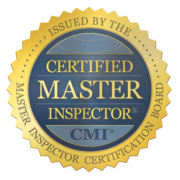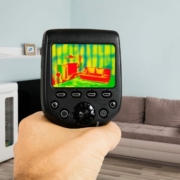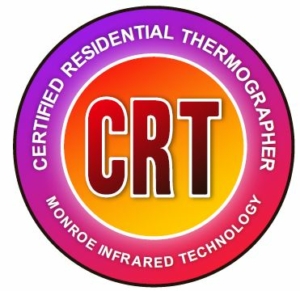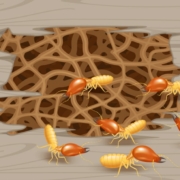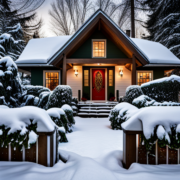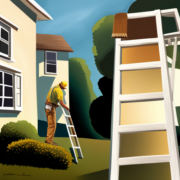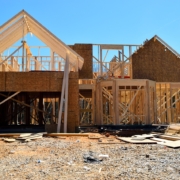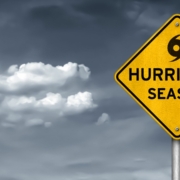When it comes to building your dream home, ensuring that every step of the construction process is executed correctly is crucial. One way to achieve this is through third-party pre-pour and pre-drywall inspections. These inspections play a vital role in verifying the structural integrity of your home and identifying potential issues before construction progresses further. In this blog post, we will explore the purpose, process, benefits, and common issues found during these inspections.
Purpose of Pre-Pour and Pre-Drywall Inspections
The primary purpose of pre-pour and pre-drywall inspections is to ensure that the construction aligns with the approved plans and specifications. If the plans are not on-site, then the standard building codes are used for reference. By conducting these inspections, potential issues or deviations from the original design can be detected early on, saving time, money, and potential headaches down the line.
Don’t get me wrong, most builders want to build the house for you the correct way but things are sometimes missed. The builder’s foreman, or construction supervisor, is the one responsible for ensuring the individual trades are performing their job in accordance with the approved plans and the building code but they are responsible for many houses and it’s easy for things to get missed. An independent third-party inspector works directly for you. We do not get paid by the builder so, to be honest, we don’t care what they think. It doesn’t matter to us if it costs the builder money to correct the issue. We document it and recommend it be corrected.
The Process of Pre-Pour and Pre-Drywall Inspections
During the pre-pour inspection, a qualified inspector will evaluate the installation and condition of the foundation forms, beams, structural steel and/or post-tension cables, and the vapor retarder. Additionally, any rough-in plumbing, electrical and mechanical is inspected to ensure it is properly protected before the concrete is poured. This inspection ensures that everything is in place and meets the required standards and preferably, the on-site building plans.
On the other hand, the pre-drywall inspection occurs after the home is “dried-in” and any essential systems or components are in place but before the walls are closed up. This inspection allows the inspector to verify that the structure itself appears to be in accordance with the building plans or building codes as well as that the electrical wiring, plumbing, and other crucial components are installed correctly and safely.
Both inspections are typically conducted by a professional home inspector or a third-party inspector who possesses the necessary expertise to identify potential issues and the familiarity with building codes and regulations. While, these inspections are not “Code-inspections”, and cannot take the place of required city or township inspections, they do rely heavily on the building codes – which are the minimum construction standards required of every new home. These inspections are scheduled at specific stages of the construction process to catch any problems early and allow for timely corrections.
Benefits for Clients
Investing in pre-pour and pre-drywall inspections offers several valuable benefits for clients. Firstly, these inspections provide peace of mind. Knowing that your home is being thoroughly evaluated by a professional can alleviate any concerns and instill confidence in the construction process. Additionally, by identifying and rectifying issues early on, you can avoid costly repairs or renovations in the future. These inspections act as a proactive measure to ensure the longevity and quality of your home.
Common Issues Found during Inspections
Pre-pour and pre-drywall inspections often uncover common issues that, if left unnoticed, could lead to significant problems later on. By catching these issues early, they can be addressed promptly, saving you from potential headaches and additional expenses.
For example, during a pre-pour inspection, we identified a post tension cable snaking over and under adjacent plumbing drain lines while not being installed with the appropriate protection. Our concern was that, when tensioned, the cables could cause damage to the drain piping. This was noted in the report, but this builder did not listen and did not correct the issue. Within months, there was wastewater bubbling up in the adjacent shower drain. The builder had to jackhammer up the shower and concrete slab to replace a broken drain pipe. The builder never confirmed the cause, other than a broken drain pipe, but it was in the exact area where we noted the issue. We cannot be sure that if the issue was corrected in the beginning, none of this would’ve happened but, I don’t think it was a coincidence.
In a recent pre-drywall inspection, we noted that the majority of the anchor bolts had loosely installed nuts. This is what holds the walls securely to the foundation! While we could hope that the dry-wallers, who were coming the next day, would have noticed this and corrected it, I can guarantee that they would not have. Why would they even look? It’s not their job to do this, it was the framers job. Luckily, the builder’s representative was present and immediately made some phone calls to have it repaired before the issue was covered up.
Conclusion
Pre-pour and pre-drywall inspections are not just additional steps in the construction process; they are essential for ensuring your home is built to the highest standards. By verifying the installation and identifying potential issues early on, these inspections provide peace of mind, cost savings, and the avoidance of future problems. We encourage you to prioritize these inspections in your construction projects to protect your investment and create a home that stands the test of time.
Remember, building your dream home is not just about the final result; it’s about the journey. By investing in pre-pour and pre-drywall inspections, you are taking proactive steps to ensure the success and longevity of your home.



